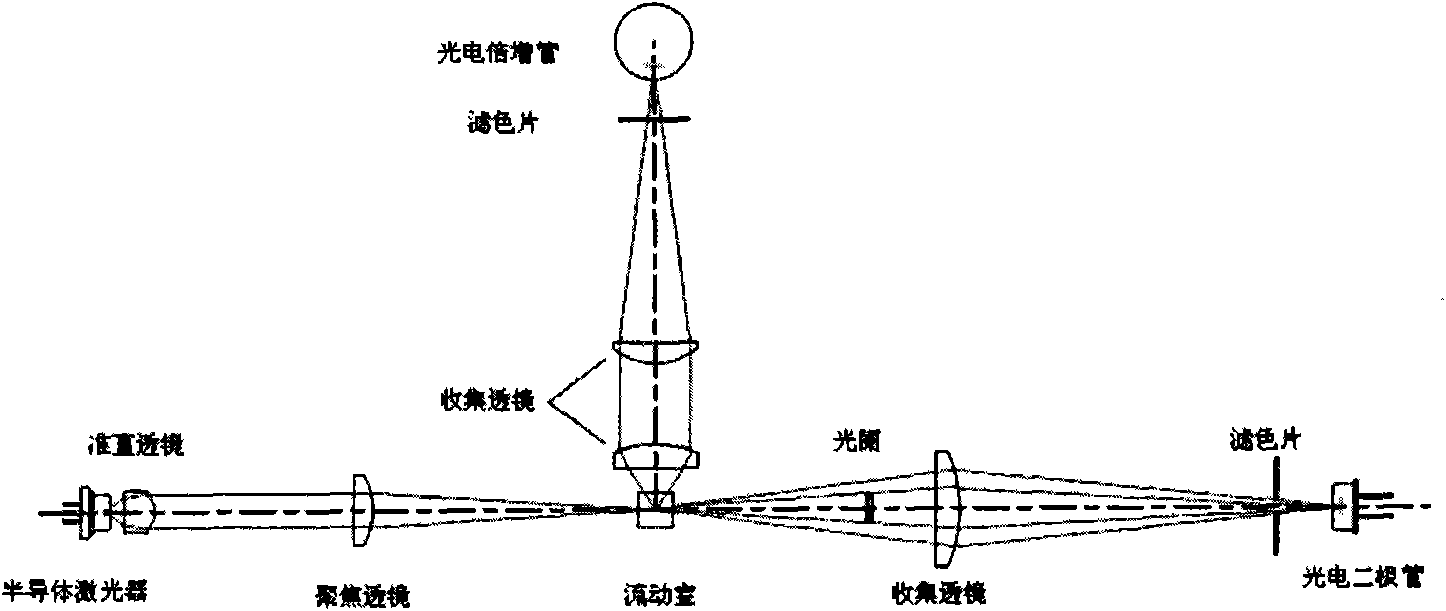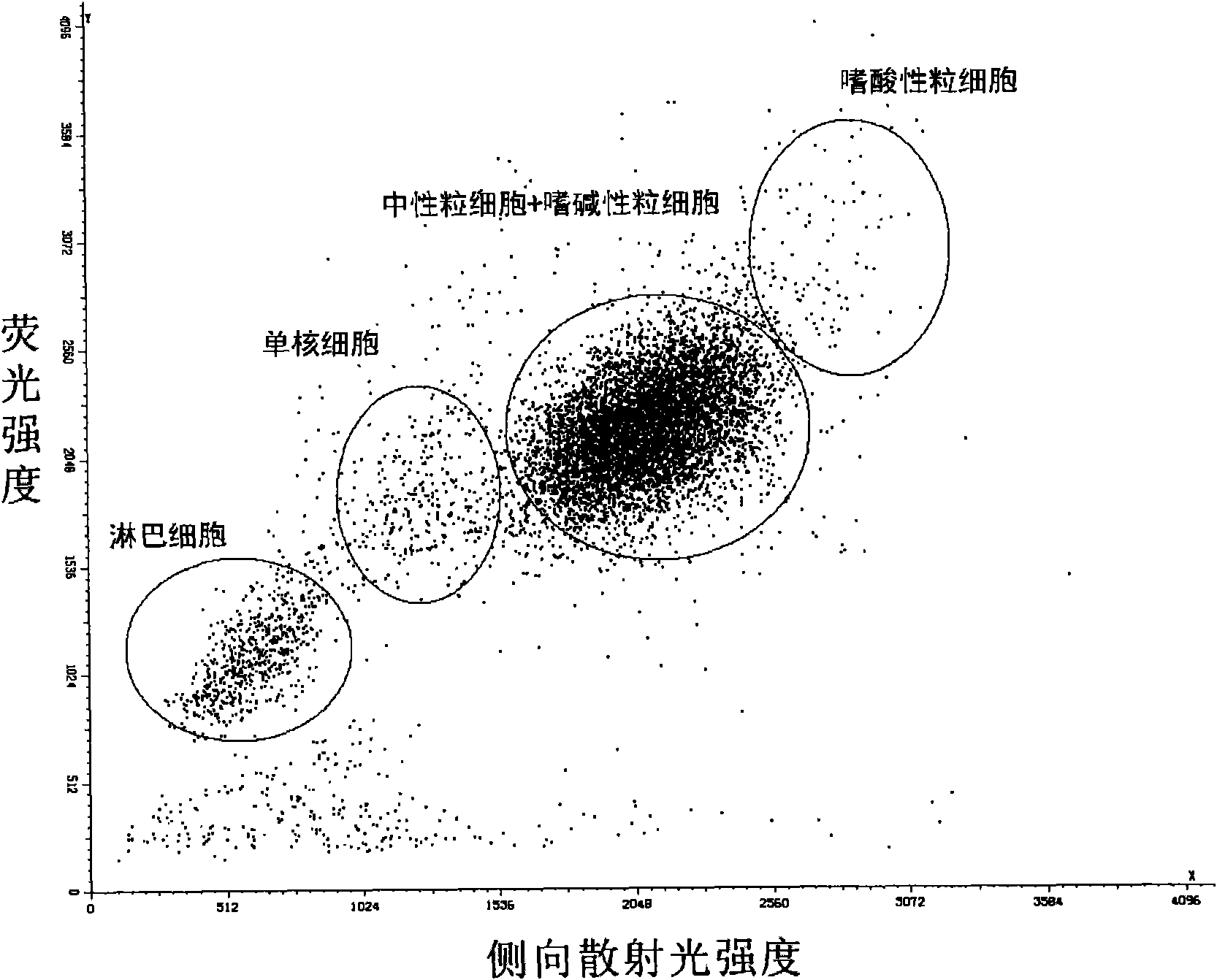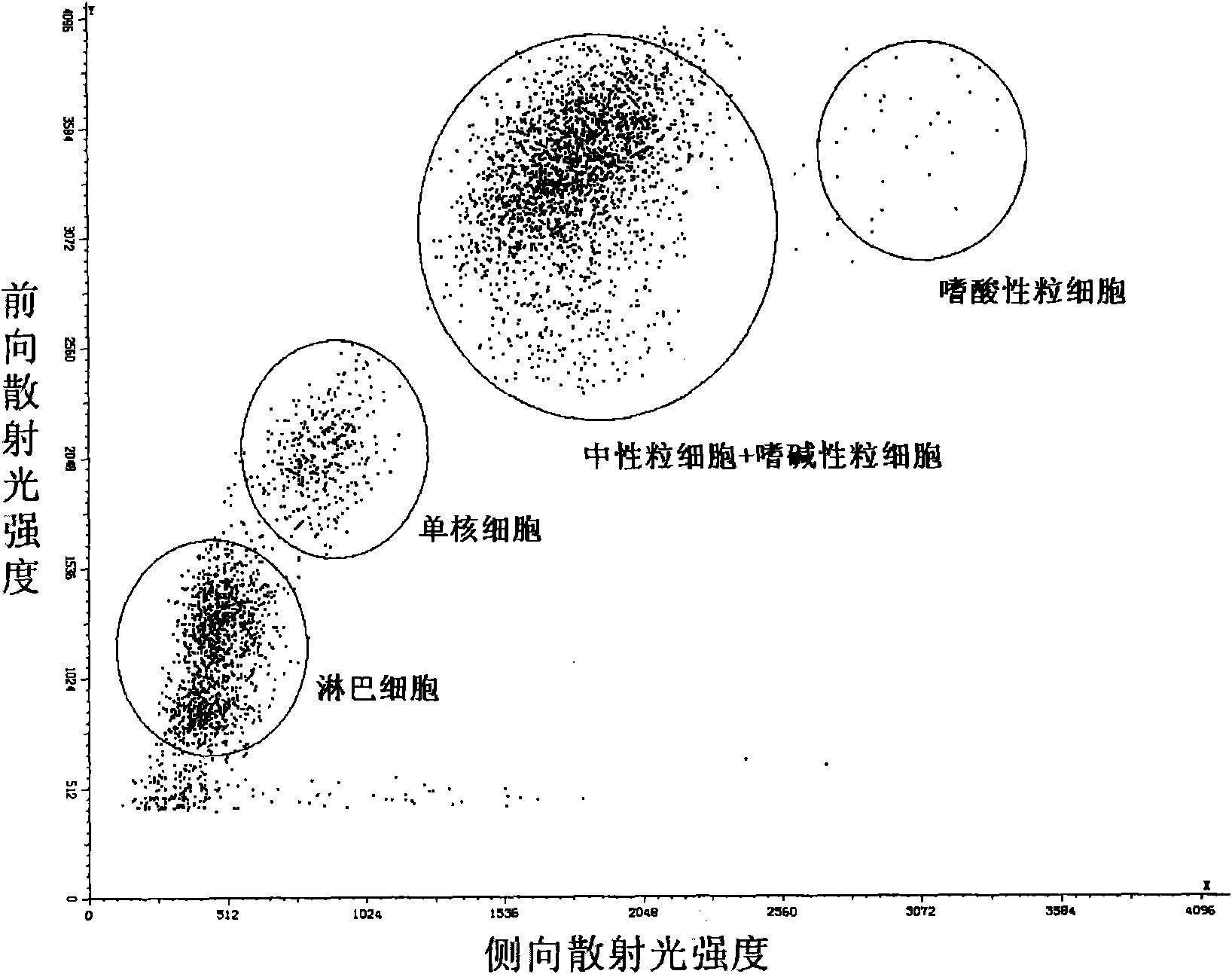Leukocyte classified counting reagent, kit and preparation method thereof and method of leukocyte classified counting
A white blood cell classification and kit technology, applied in biochemical equipment and methods, analysis materials, biological particle analysis, etc., can solve the problems of unclear classification, increase the complexity of instrument design, production cost, and unsatisfactory classification effect, and achieve Good production and application prospects, good classification effect, and short reaction time
- Summary
- Abstract
- Description
- Claims
- Application Information
AI Technical Summary
Problems solved by technology
Method used
Image
Examples
Embodiment 1
[0228] Fluorescent dye A 0.5ppm
[0229] Lauryl Glucoside 0.05g / L
[0230] Phosphate buffer 20mM
[0231] pH 7.0
[0232] Prepare 20nM phosphate buffer solution (pH 7.0), weigh the fluorescent dye and dodecyl glucoside according to the amount, add them to 800ml phosphate buffer solution, stir to dissolve, and dilute to volume with phosphate buffer solution. Filter and set aside.
[0233] Add 20 μl of fresh anticoagulated blood to 1 ml of the above reagent, mix for 25 seconds while maintaining the temperature at 35° C., and then use laser flow cytometry (light source: red semiconductor laser, wavelength 633 nm) to detect leukocytes. The fluorescence intensity information of the cells is measured by using the side fluorescence at a measuring angle of 90 degrees, and the side scattered light intensity information of the cells is measured by using the side scattered light at a measuring angle of 90 degrees. The result is as figure 2 As shown, white blood cells are divided in...
Embodiment 2
[0235] Fluorescent dye E 0.5ppm
[0236] Saponin 0.05g / L
[0237] Polyoxyethylene (15) cetyl ether 0.8g / L
[0238] Phosphate buffer 20mM
[0239] pH 7.0
[0240] According to the same method as in Example 1, the above-mentioned components were used to prepare a solution, and the saponin here was purchased from Tokyo Chemical Industry Co., Ltd. Add 20 μl of fresh anticoagulated blood to 1 ml of the above reagent, mix for 23 seconds under the condition of maintaining the temperature at 43°C, and then use laser flow cytometry (light source: red semiconductor laser, wavelength 633nm) to detect leukocytes. The side scattered light intensity information of the cells is measured by using the side scattered light with a measuring angle of 90 degrees, and the forward scattered light intensity information of the cells is measured by using the low angle scattered light with a measuring angle of 1-5 degrees. The result is as image 3 As shown, white blood cells are divided into four ...
Embodiment 3
[0242] Fluorescent dye A 0.5ppm
[0243] Octyl Glucoside 0.1g / L
[0244] Sodium salicylate 2.0g / L
[0245] HEPES 20mM
[0246] Adjust pH 7.0 with NaOH
[0247] In the same manner as in Example 1, a solution was prepared using the above components. Add 20 μl of fresh anticoagulated blood to 1 ml of the above reagent, mix for 25 seconds while maintaining the temperature at 38°C, and then detect white blood cells by laser flow cytometry (light source: red semiconductor laser, wavelength 633nm). The fluorescence intensity information of the cells is measured by using the side fluorescence at a measuring angle of 90 degrees, and the side scattered light intensity information of the cells is measured by using the side scattered light at a measuring angle of 90 degrees. The result is as Figure 4 As shown, white blood cells are divided into four types: lymphocytes, monocytes, neutrophils and eosinophils.
PUM
 Login to View More
Login to View More Abstract
Description
Claims
Application Information
 Login to View More
Login to View More - R&D
- Intellectual Property
- Life Sciences
- Materials
- Tech Scout
- Unparalleled Data Quality
- Higher Quality Content
- 60% Fewer Hallucinations
Browse by: Latest US Patents, China's latest patents, Technical Efficacy Thesaurus, Application Domain, Technology Topic, Popular Technical Reports.
© 2025 PatSnap. All rights reserved.Legal|Privacy policy|Modern Slavery Act Transparency Statement|Sitemap|About US| Contact US: help@patsnap.com



